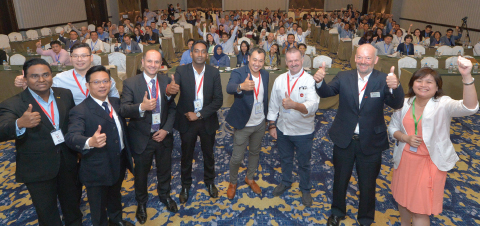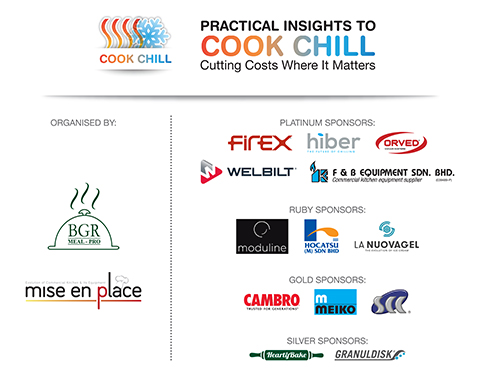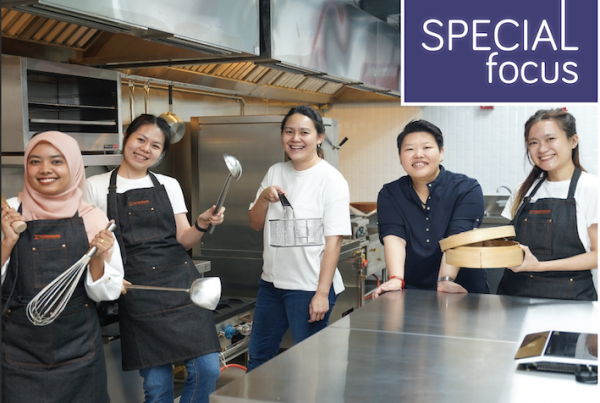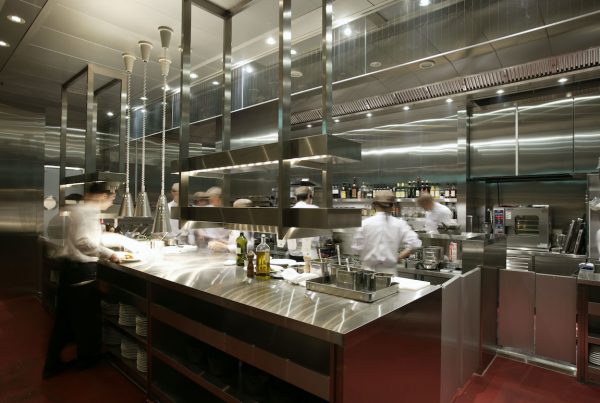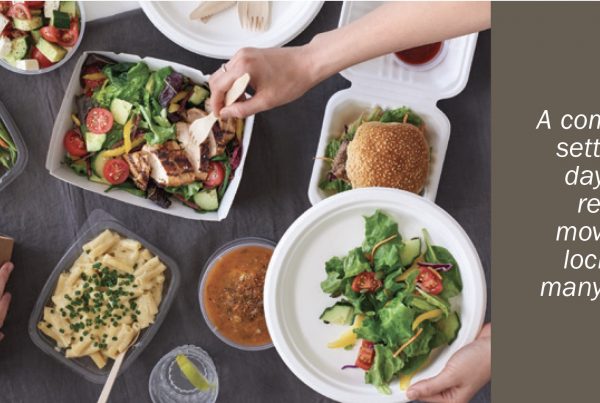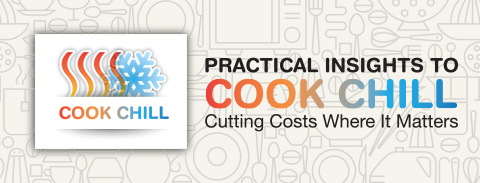
On the 7th and 8th of November 2017, the first ever Cook- Chill Conference was successfully held at the Bangi Golf Resort Clubhouse and Hotel Bangi in Putrajaya, Malaysia.
The two-day event drew 350 attendees to tour of one of Malaysia’s top facility practising the cook-chill method and gain a wealth of information from 13 renowned guest speakers connected to the F&B industry from across the globe.
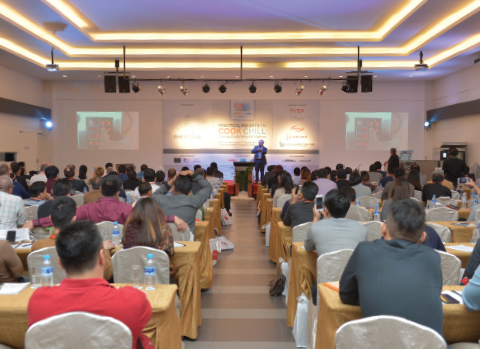 Having been in their respective fields for a number of years, the esteemed presenters comprising of celebrity master chefs and top-notch business professionals from Asia, Europe and the US shared their experiences, skills and insights on the latest trends and developments of the cookchill process and equipment in the preparation of ready-toeat meals.
Having been in their respective fields for a number of years, the esteemed presenters comprising of celebrity master chefs and top-notch business professionals from Asia, Europe and the US shared their experiences, skills and insights on the latest trends and developments of the cookchill process and equipment in the preparation of ready-toeat meals.
Organised by Bangi Meal Pro and Mise En Place Asia Magazine, the idea for the event came about as cook chill is a good method of food preparation that businesses should consider adopting to ensure consistency across their menu while providing business owners with solutions to help their expansion or tackle rising costs.
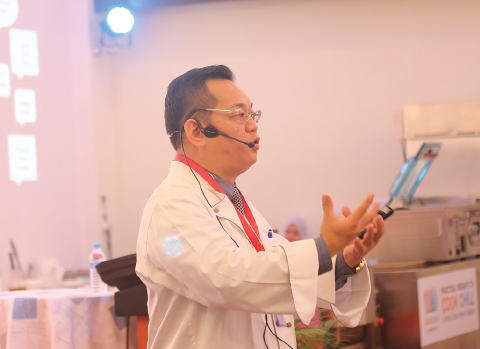 Participants were split into 2 groups with one group experiencing front row seats to a live demonstration of how cook chill is practised followed by a tour of Bangi Golf Resort’s impressive cook chill equipped kitchen. The second group indulged in a detailed classroom discussion on how other elements can affect a business through the practice of cook chill. The participants would then switch sessions the next day.
Participants were split into 2 groups with one group experiencing front row seats to a live demonstration of how cook chill is practised followed by a tour of Bangi Golf Resort’s impressive cook chill equipped kitchen. The second group indulged in a detailed classroom discussion on how other elements can affect a business through the practice of cook chill. The participants would then switch sessions the next day.
Day 1 was followed by a dinner specially organised by Hotel Bangi Putrajaya at Funtasia Coffee House where participants could unwind, relax and experience the cook chill products served at the buffet line.
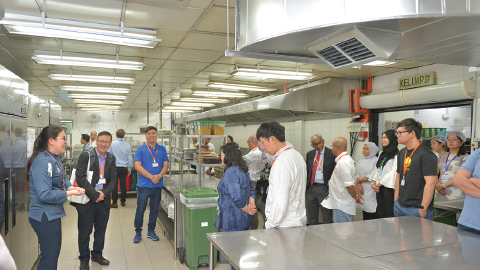
AT THE CLUBHOUSE – THE LIVE EXPERIENCE
The live demonstration on the first day was held at the Clubhouse of Bangi Gold Resort with breakfast served from 9.00 am onwards followed by registration and the day kicked off with Chef Richmond Lim sharing with the participants on the topic “Defining the cook-chill method”.
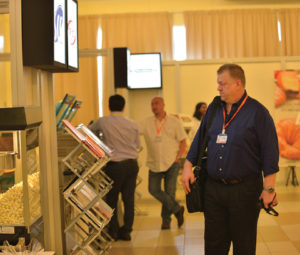
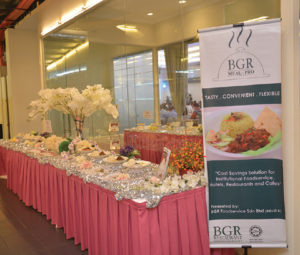
According to Master Chef Richmond Lim, chefextraordinaire to Royals, executives and high-profile diners the world over, the cook-chill method not only maximises productivity, consistency and efficiency, but it also extends the shelf life of foods, without sacrificing on nutritional quality and taste. Furthermore, food operators will be able to churn out more comprehensive recipes and menus as well as move food from the back of the house to the front of the house much faster.
There are of course, some disadvantages namely heavy capital investment to procure the cook-chill equipment, space constraints, a high requirement for staff training and the risk of food poisoning should there be a lapse in control of the process, procedures and guidelines of the cook-chill method. As there are no short-cuts in creating, innovating, cooking and preparing foods, Chef Richmond recommends spending time in research and development and training kitchen staff well before using the cook-chill method.
When practising cook-chill, applying automation from the very beginning can have an effect on your cooking process and production and that is where “Getting it right from the beginning” is important. Mr. Gabriele Vendruscolo representing FIREX and Chef Paul O’Neill, a trained chef in Michelin-star establishments in Europe believes that cookchill
can greatly improve product quality by giving simple and shorter training periods to kitchen staff on standardised recipes and equipment know-how. This could also improve staff morale. Individual outlets do not need highly skilled chefs to finish their products for service. Instead, these chefs can focus on recipe development and tasting as the cooking can be done with reduced skilled labour.
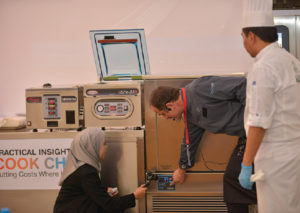
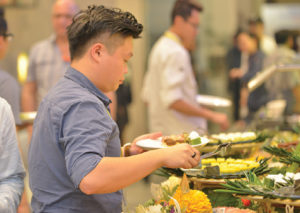
Furthermore, cook-chill and cook-freeze systems are highly scalable, capitalising on existing manpower to increase operational capability and production capacity without compromising on food quality, consistency and food safety standards. Many other benefits brought up by Gabriele and Chef Paul includes the costs saving factors in terms of utility and reduction in waste with bulk production and organised inventory. Space for storage is easily reduced as well as storing cook-chill food actually takes up less space.
Many food establishments, especially those offering banqueting services, prefer to cook foods in advance and store them away for later use. A most important step that must be taken once food is cooked is to blast chill it before it enters storage. Although the process of chilling foods has been around for decades, usually through the use of ice baths, rapidly chilling foods using a blast chiller has now become en vogue bringing us to “The Art of Chilling”.
According to Trainer and Corporate Chef Angelo Bosco, the blast chiller is the heart of a kitchen. To avoid food contamination and evaporation or oxidisation as well as maintaining its freshness once cooked, the food must be blast chilled or shock frozen really quickly. Food that is not blast chilled and simply frozen or refrigerated in a holding cabinet is open to bacterial contamination after 2 days and is likely to lose its volume, enzymes, flavor, fragrance, and quality. The blast chilling technology on the other hand, helps to maintain the product and its quality while allowing chefs to do their mise en place.
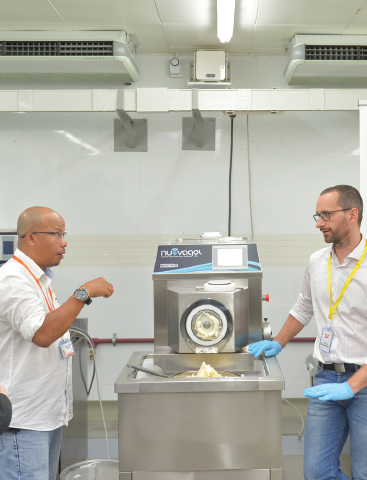 “Everything in vacuum” – Foods, whether cooked or uncooked, cannot stay fresh forever but with the right equipment, its shelf life can most certainly be prolonged. Food service operators have now turned to vacuum sealing machines to preserve, protect, cook and store their food. Vacuum sealing hinders the growth of bacteria and mold, keeps food fresh, prevents freezer burn, promotes higher yield of the finished product and complies with HACCP standards.
“Everything in vacuum” – Foods, whether cooked or uncooked, cannot stay fresh forever but with the right equipment, its shelf life can most certainly be prolonged. Food service operators have now turned to vacuum sealing machines to preserve, protect, cook and store their food. Vacuum sealing hinders the growth of bacteria and mold, keeps food fresh, prevents freezer burn, promotes higher yield of the finished product and complies with HACCP standards.
This is exactly what International Sales Director of Orved, a leading manufacturer of vacuum-sealing machines, Mr. Leonardo Salvaro explained in his presentation. Mr Leonardo also pointed out that cooking food sous vide (under vacuum) is also possible once food is placed in a vacuum-sealed bag. The food must then be submerged in a water bath for a short time, or until it has reached a set temperature. After the food is removed from the bath, it can be seared or poached, depending on your preference, and served out. Using vacuum-sealed bags ensures the juices from the meat or seafood stay within the bag and the moist environment helps to retain its natural juices and produce a more tender taste and texture.
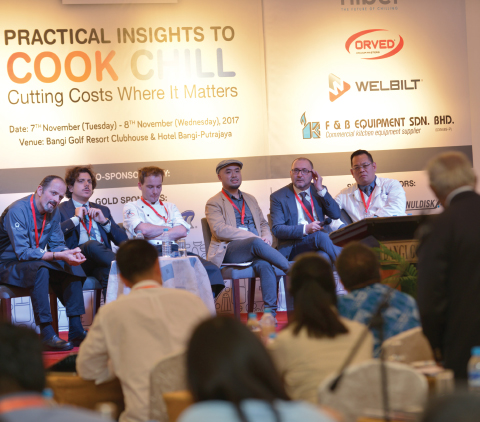 With all your mise en place and food in place, the customers’ experience will take priority. As the cook chill method requires you to blast chill or blast freeze your food to control production, it is also very important to “Re-thermalise and Regenerate Quality”.
With all your mise en place and food in place, the customers’ experience will take priority. As the cook chill method requires you to blast chill or blast freeze your food to control production, it is also very important to “Re-thermalise and Regenerate Quality”.
Chef Andreas Rabenseifner, a Senior Application Chef of Convotherm, passionately encouraged the use of rethermalisation in a food preparation operations as it can significantly reduce labour and food costs, add precise portion control and serving time flexibility, improve food quality and consistency, as well as reduce staff stress by shifting from traditional banqueting to plated re-therm. This allows a separation between production and service functions.
Participants were then split into smaller groups where a kitchen tour led by Head Chef Kamaruddin and his team gave everyone the opportunity to bring up questions as they experienced the cook chill operation in the clubhouse. This was then followed by a special session with Mr. Soh Chung-Ky who instituted the cook chill method into Bangi Golf Resort. Mr. Soh graciously shared his journey and how cook chill has impacted his business’s operations as well as costs.
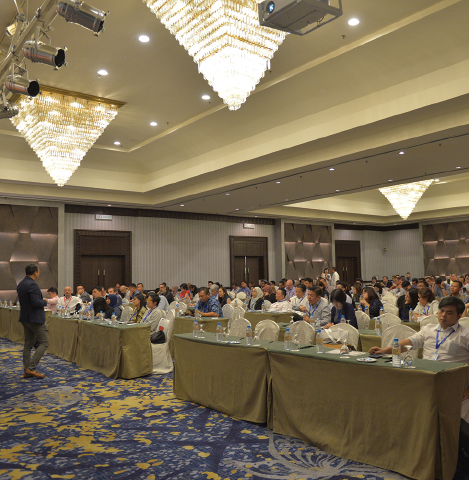 IN THE CLASSROOM – WHERE PLANNING HAPPENS BEFORE EXECUTION
IN THE CLASSROOM – WHERE PLANNING HAPPENS BEFORE EXECUTION
Necessary investment to practice cook chill is more than just buying the right equipment and pressing the start button. There must first be planning for future needs and integration.
However, most of the time, these processes are taken lightly. According to Mr. Gunaselan Raju from iO Consultants, no one plans to fail but many fail to plan hence “A detailed plan, structures success”. First and foremost, a framework setting must be put in place together with guidelines (i.e. Halal Certification, HACCP certification) and policies of the establishment. Building concepts such as site and ecological constraints, local authority requirements must be factored into the planning. Your entire production flow – from production volume, to storage to waste management and even expansion possibilities must be considered during your layout planning process.
When it comes to proper handling of food, “The need for HACCP guidelines” becomes your best bet to control and manage your risks. HACCP, or Hazard Analysis Critical Control Point system, is a common-sense method of managing risk, used right around the world by food organisations to prepare food safely. According to Managing Director of HACCP International – Asia Pacific, Mr. Bill Simos, the cook and chill method of food preparation incorporates the HACCP requirements in each of its processes, making it a safe method to be practised by kitchens all over.
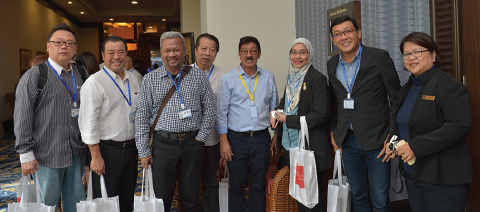
Furthermore, being in the South East Asian region, practising “Cook-chill for Halal Consumers” makes perfect sense. Mr. Huza Razi, a Principal Consultant of Huza Radzi Consultancy explains that one of the fastest growing markets in the world today is the Muslim travel market. This niche market is driven amongst others by Muslim-friendly F&B services i.e. authentic halal food when they travel to Malaysia. By tapping into the halal market and serving halal tourists, eco-tourism in the country can be further boosted.
As Mr. Sean Poi, Manager of F&B Equipment Sdn Bhd and Mr. Benny Chan, Co-Founder of Printdaily Sdn Bhd explained, there are currently many smart equipment such as the Combi ovens that have a tablet embedded in it. Through a smart phone or smart device, chefs and kitchen staff are able to control its usage and monitor its performance. With the food business becoming bigger and more hierarchical, “Utilising IT in food preparation” is logical when there is a need for access control and approval systems. These systems must be linked to other functional systems. For example, all you have to do is key in a recipe or food label once and it can then be used or replicated in multiple modules and operations e.g. accounting systems, quotation systems, ERP, etc.
When going into the food service business, everyone dreams of success. One such success story comes from a small business entrepreneur who dreamt of taking his business to greater heights and achieved his goal. Mr. Mark Kenny Douglas, Director of Mark’s Food Solutions Sdn Bhd shared his journey and how the application of technology and cook-chill into his operations opened new doors for him in the F & B industry today. By incorporating all the elements of the cook-chill process into his semiindustrialised cooking methods, he has managed to reduce on labour-intensive and time-consuming tasks on the way to “Realising a dream of success”. “To run a successful business, you must first have a goal in mind and train your mindset to always want to do better. If you want to do something that has already been done, don’t do it. Learn by trial and error”. Mr. Mark advices budding entrepreneurs.
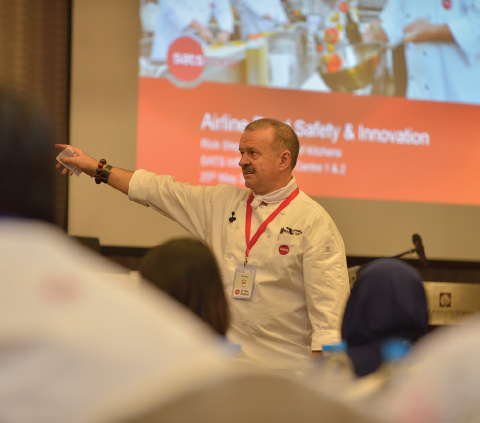 Our guest speaker Dr. Rick Stephen, Director of Chefs Consortium as well as Director of Kitchens from SATS Food Solutions Group shared how the SATS Group has “stayed ahead of their competition by embracing technology and best practises” in both Institutional Catering and In-flight Catering. Dr. Rick brought participants into his kitchen with videos of how they work to serve and deliver thousands of ready to eat meals in a day. Automation is evidently practised not just in the cooking process but automation in logistics, deliveries and inventories management as well. To “Stay ahead of the competition by embracing technology and best practises”, Dr. Rick and his team continues to innovate their processes with automation in the workplace.
Our guest speaker Dr. Rick Stephen, Director of Chefs Consortium as well as Director of Kitchens from SATS Food Solutions Group shared how the SATS Group has “stayed ahead of their competition by embracing technology and best practises” in both Institutional Catering and In-flight Catering. Dr. Rick brought participants into his kitchen with videos of how they work to serve and deliver thousands of ready to eat meals in a day. Automation is evidently practised not just in the cooking process but automation in logistics, deliveries and inventories management as well. To “Stay ahead of the competition by embracing technology and best practises”, Dr. Rick and his team continues to innovate their processes with automation in the workplace.
So, what is next for the progression of a business? “Moving forward – the future of cafés and restaurants” is a guessing game for many. Over the centuries, restaurants and cafés have changed in design, layout and equipment. Today, we are in the digital age of transformation and automation. Mr. Richard N Caron, Senior Vice President, Innovation of Welbilt Inc. predicted that the future of restaurant kitchens and cafés will be based on systems that can now accumulate explicit knowledge. This would apply the accumulation of knowledge to the integration of food equipment, and people which would result in dynamic operating procedures to propel the food industry well into the future.
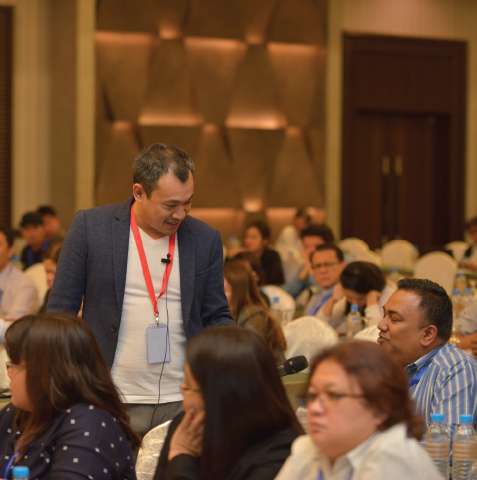 With the 2 days well spent among industry leaders and players, it is evident that the technology’s role in food production must be embraced to stay ahead. Whether you are a well-established brand or a new kid on the block, the challenges are there and we are grateful to those that continue to revolutionise and improve the processes to meet the changing demands.
With the 2 days well spent among industry leaders and players, it is evident that the technology’s role in food production must be embraced to stay ahead. Whether you are a well-established brand or a new kid on the block, the challenges are there and we are grateful to those that continue to revolutionise and improve the processes to meet the changing demands.
Mise En Place would like to sincerely thank our Cook-Chill Conference partners; Firex, Hiber, Orved, Welbilt and F & B Equipment Sdn Bhd as well as co-sponsors Moduline, Hocatsu, La Nuovagel, Cambro, SCC, Heartybake and Granuldisk as the Conference’s Ruby, Gold and Silver sponsors.
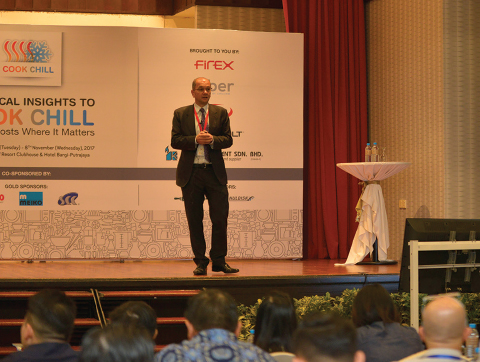 A special thank you is also extended to our Conference coorganiser, Director of Bangi Golf Resort Mr. Soh Chung-Ky and the wonderful team at Bangi Golf Resort and Hotel Bangi Putrajaya who kindly shared their facility and orchestrated the practical demonstrations and equipment innovation to create a live theatre of interests in the culinary arena. As a result, the Conference was a tremendous success and we look forward to our next conference in 2018!
A special thank you is also extended to our Conference coorganiser, Director of Bangi Golf Resort Mr. Soh Chung-Ky and the wonderful team at Bangi Golf Resort and Hotel Bangi Putrajaya who kindly shared their facility and orchestrated the practical demonstrations and equipment innovation to create a live theatre of interests in the culinary arena. As a result, the Conference was a tremendous success and we look forward to our next conference in 2018!
If you wish to be on our mailing list for the next event, drop us a line at admin@miseenplaceasia.com with the subject “Keep me in the loop for 2018!”. Thank you.
